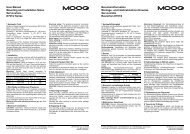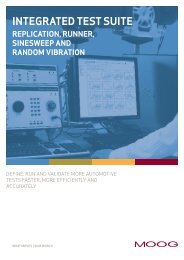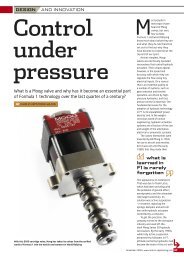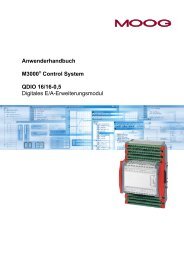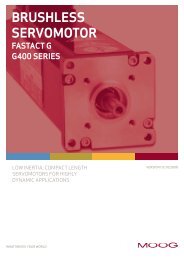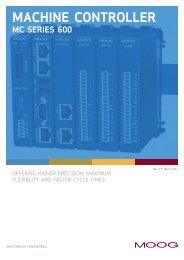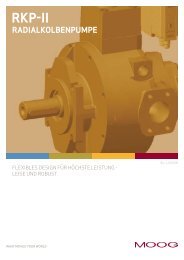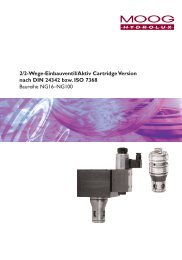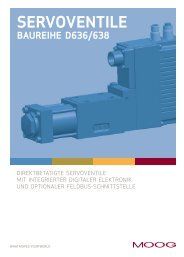User Manual M3000® Automation System / MSC II (Moog Servo ...
User Manual M3000® Automation System / MSC II (Moog Servo ...
User Manual M3000® Automation System / MSC II (Moog Servo ...
You also want an ePaper? Increase the reach of your titles
YUMPU automatically turns print PDFs into web optimized ePapers that Google loves.
10 <strong>MSC</strong> <strong>II</strong> (<strong>Moog</strong> <strong>Servo</strong> Controller) EtherCAT<br />
10.12 EtherCAT<br />
<strong>MSC</strong> <strong>II</strong> is optionally available with dual EtherCAT interface.<br />
The configuration of the network nodes is done in the PLC Configuration of<br />
the development environment MACS.<br />
WARNING Do not connect EtherCAT to any other Ethernet networks.<br />
The high rate of telegrams which are transmitted by Ether-<br />
CAT will prevent other devices like computers and servers on<br />
the network from transmitting data.<br />
There is a danger of<br />
• Network overload/breakdown<br />
• Malfunction of connected devices<br />
• Data loss at connected devices<br />
It is strongly recommended to use cables of a special color<br />
only for EtherCAT connections.<br />
10.13 Digital Sensor Interfaces<br />
The <strong>MSC</strong> <strong>II</strong> provides 4-digital sensor interfaces according to TIA/EIA 422/485<br />
(previously RS 422/485) that can be used with devices such as position<br />
transducers or shaft encoders with an SSI interface or incremental sensor<br />
signals in different formats, such as pulse train or frequency modulation.<br />
�-"10.13.3-Connecting SSI Sensors" on page 102<br />
�-"10.13.4-Connecting Incremental Sensors" on page 105<br />
The sensor interfaces are configured in the PLC configuration of the<br />
MACS development environment.<br />
Recommended cable types<br />
• Use only shielded cables.<br />
• The shield must be made of copper braiding with at least 80% coverage.<br />
• The wire must be made of copper with a cross section of at least<br />
0.25 mm2 (23 AWG).<br />
• In environments with a high amount of disturbance, use cables with<br />
twisted pair wires.<br />
10.13.1 Termination Resistors<br />
Each sensor interface of the <strong>MSC</strong> <strong>II</strong> is equipped with switchable termination<br />
resistors, one for each channel. The default state of the switches is ON. This<br />
means termination resistor is active for each differential pair. When using<br />
more sensor interfaces together with one sensor, the additional termination<br />
resistors need to be switched off (e.g. in SSI Slave mode).<br />
Activation/deactivation of the resistors, are controlled by the DIP switches on<br />
the <strong>MSC</strong> <strong>II</strong> mainboard.<br />
Digital Sensor Interfaces<br />
of the <strong>MSC</strong> <strong>II</strong><br />
Termination Resistors<br />
of <strong>MSC</strong> <strong>II</strong>'s Digital<br />
Sensor Interfaces<br />
© <strong>Moog</strong> GmbH <strong>User</strong> <strong>Manual</strong> M3000 ® and <strong>MSC</strong> <strong>II</strong> (CA65865-001; Version 1.1, 08/08) 101





